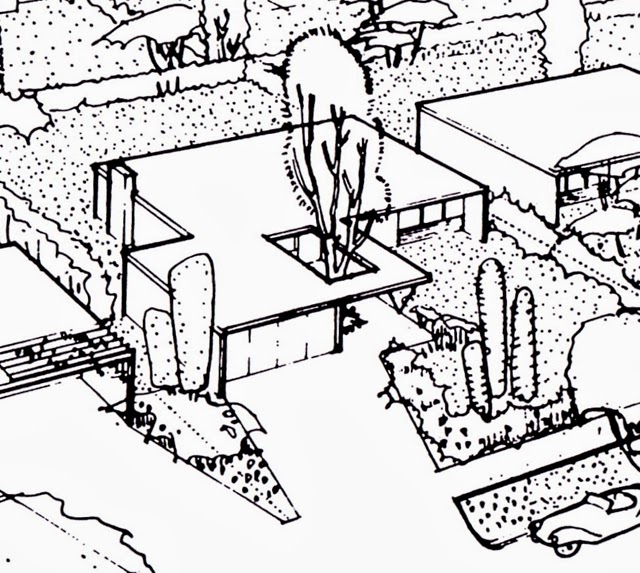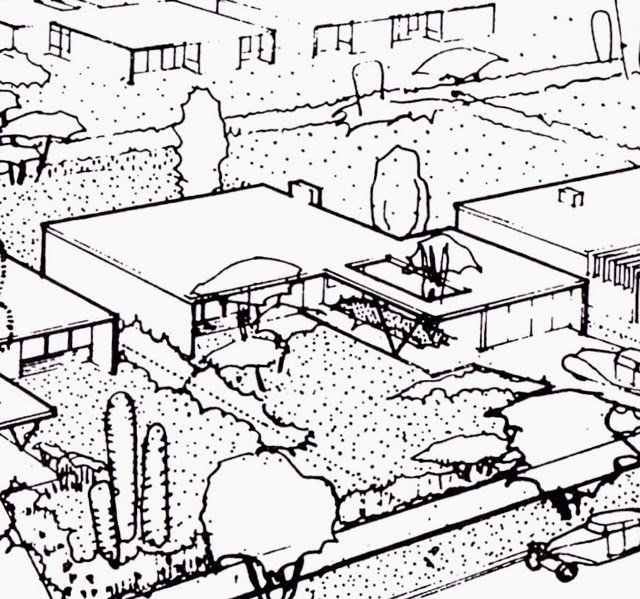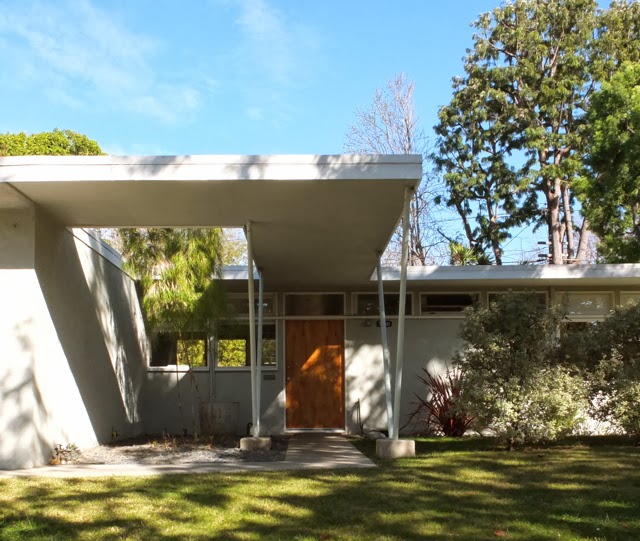
On the surface, Gregory Ain's architecture is not exactly sexy, especially when compared to architects like Craig Ellwood or John Lautner. Ain was less interested in making visual architectural statements and focused his attention on using modern architecture to solve "the common architectural problems of common people".

Ain and firm partners Joseph Johnson and Alfred Day, teamed up with landscape architect Garrett Eckbo, and private developer B.M. Edelman to build the Mar Vista Housing project. Built in 1948, the goal was to build a tract of cost-efficient housing that created a "community in a park" atmosphere. At this time Ain got away from building custom houses for individual clients and was focusing efforts on housing for "common people". He took a problem-solving approach to the social and functional aspects of housing. He developed the Mar Vista tract with similar house models to promote unity, but changed the orientation for variety. Flexible floor plans and open kitchens were used to fit the needs of various family types. Eckbo added variety with his landscape design for individual houses, but also worked with Ain to create common space in order to blur the lines between public and private property. If all this common land and housing for the working class is starting to sound a little lefty-communist-like-- it sort of was. In fact, at the time, modern architecture, with those flat roofs, was considered attractive to those with left-leaning political views. Although Ain was perceived as a communist, he wasn't actually looking to express political ideals through Mar Vista, but only wanted to promote efficiency and social interaction through his housing prototypes.
Source: Arts & Architecture, May 1948

Source: Arts & Architecture, May 1948


Source: Arts & Architecture, May 1948

This model is the reverse of the above.

Source: Arts & Architecture, May 1948


VKG in the house
Source: Gregory Ain, by Anthony Denzer



Marketing efforts were made to proclaim Mar Vista as "Modern & Unique", a tactic Ain probably didn't care for. The campiagn wasn't very successful and the houses were not quick sellers. They were priced at $11K in an area that was not very desirable at the time. Due to slow sales and a lack of affordability, financing was pulled by the FHA and only the first phase of 52 houses were built. The original plan was for 102.
Although Ain was disappointed they couldn't get below the $10K sales price and the full plan was never realized, the project was still seen as a success. The list of former tenants also attests to this success. Some of the early tenants included Max and Rita Lawrence (Architectural Pottery founders); film director Joseph Strick (later commissioned the only Oscar Niemeyer house in the US); Barbara Billingsley (June Cleaver from Leave it to Beaver); and there were also a host of academics and creative types. In Gregory Ain, by Anthony Denzer there is a quote by Max Lawrence where he recalled: "These houses brought these disparate types of people together. And even though there were different backgrounds politically, socially, and all, somehow by living in the housing they did influence all of us, and made us feel unique, with a common bond." A second quote in the book, by a chemist names Rachel Rosenbach, stated: " We found neighbors that followed our line of thinking politically, and that's another reason why we felt so comfortable."
Source: Gregory Ain Mar Vista Tract HPOZ

I know it's in LA, but on my walk through the neighborhood last weekend I did notice a fair number of Prius hybrids parked in driveways. Perhaps the social experiment is still working?

OG sidewalks
In 2003, the Mar Vista Tract was designated as a Historic Preservation Overlay Zone (HPOZ), the first for any post-war development in Los Angeles. A preservation plan has also been established to protect the integrity of this historic development. More about the HPOZ and the history of the development can be found here.